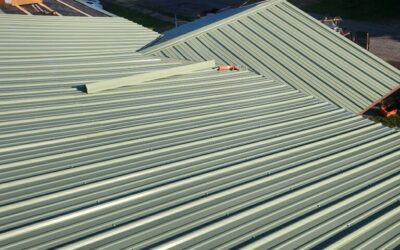Comprehensive Guide to Roofing Warranties for Homeowners
When investing in a new roof, understanding the warranties that come with it is crucial. Roofing warranties can offer peace of mind, ensuring that your investment is protected against unforeseen issues. This guide delves into the different types of roofing warranties, their coverage, and what homeowners should be aware of to make informed decisions.
Table of Contents
- Introduction to Roofing Warranties
- Types of Roofing Warranties
- Pro-Rated vs. Non-Pro-Rated Warranties
- Understanding ‘Lifetime’ Warranties
- Common Exclusions in Roofing Warranties
- Transferring Roofing Warranties
- Choosing the Right Warranty
- Maintaining Your Roof to Uphold Warranty
- Conclusion
- Recommended Video Resource
Introduction to Roofing Warranties
A roofing warranty serves as a promise from either the manufacturer or the contractor (or both) to stand behind the quality of their product and/or workmanship. These warranties can cover various aspects, from material defects to installation errors, ensuring homeowners are protected against potential issues that may arise post-installation.
Types of Roofing Warranties
Manufacturer’s Warranty
This warranty is provided by the roofing material manufacturer and typically covers defects in the roofing materials themselves. For instance, if shingles deteriorate prematurely due to a manufacturing defect, the manufacturer would be responsible for replacing them. However, it’s essential to note that most material-only warranties are prorated after a certain period, meaning the coverage diminishes over time.
Workmanship Warranty
Offered by the roofing contractor, this warranty covers errors related to the installation process. If your roof develops issues like leaks due to improper installation, the contractor would be responsible for repairs under this warranty. The duration and coverage of workmanship warranties can vary significantly between contractors.
Full-System Warranty
A comprehensive warranty that covers both materials and workmanship. This type of warranty often includes additional components like underlayment and flashing. While more expensive, it offers extensive protection, ensuring that both material defects and installation errors are covered.
Pro-Rated vs. Non-Pro-Rated Warranties
Understanding the difference between pro-rated and non-pro-rated warranties is vital:(
- Non-Pro-Rated Warranty: Offers full coverage for the entire warranty period. If a defect arises, the manufacturer or contractor covers the total cost of repairs or replacements.
- Pro-Rated Warranty: Coverage decreases over time. For example, after a certain number of years, the warranty might only cover a percentage of the repair or replacement costs, with the homeowner bearing the remaining expenses.
Understanding ‘Lifetime’ Warranties
The term “lifetime” in roofing warranties can be misleading. Often, it refers to the duration of the homeowner’s ownership of the property. However, many “lifetime” warranties come with provisions that reduce coverage after a specific period, typically transitioning to a pro-rated basis. It’s crucial to read the fine print to understand the actual coverage duration and conditions.
Common Exclusions in Roofing Warranties
While warranties offer protection, they also come with exclusions. Common exclusions include:
- Acts of Nature: Damage from events like hailstorms, tornadoes, or earthquakes may not be covered.
- Improper Maintenance: Neglecting regular roof maintenance can void the warranty.
- Unauthorized Repairs: Using unapproved contractors or materials for repairs can lead to warranty nullification.
- Installation of External Fixtures: Adding items like satellite dishes without proper sealing can void warranties.
Transferring Roofing Warranties
If you sell your home, some roofing warranties are transferable to the new owner, enhancing the property’s value. However, transfer conditions vary:
- Time Limits: Some warranties require transfers within a specific period post-installation.
- Transfer Fees: A nominal fee might be charged for the transfer process.
- Reduced Coverage: The new owner might receive reduced warranty coverage.
Always check the warranty’s transfer policy and ensure proper documentation during the property sale.
Choosing the Right Warranty
When selecting a roofing warranty:
- Assess Your Needs: Consider factors like local climate, roof type, and budget.
- Compare Warranty Types: Evaluate the differences between manufacturer, workmanship, and full-system warranties.
- Read the Fine Print: Understand coverage details, exclusions, and conditions.(
- Consult Professionals: Discuss warranty options with reputable roofing contractors to determine the best fit for your situation.
Maintaining Your Roof to Uphold Warranty
To ensure your warranty remains valid:
- Regular Inspections: Schedule periodic roof inspections to identify and address potential issues early.
- Prompt Repairs: Address damages immediately to prevent further deterioration.
- Documentation: Keep records of all maintenance and repairs.
- Use Approved Contractors: Ensure that any work done is by authorized professionals using approved materials.
Conclusion
Understanding roofing warranties is essential for homeowners to protect their investment. By familiarizing yourself with the types of warranties, their coverage, exclusions, and maintenance requirements, you can make informed decisions and ensure your roof remains in optimal condition for years to come.
Recommended Video Resource
For a visual explanation of roofing warranties, consider watching the following video:
This video provides a simplified overview of the benefits and differences between various GAF roofing system warranties.
 (440) 307-2060
(440) 307-2060


